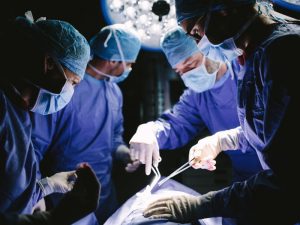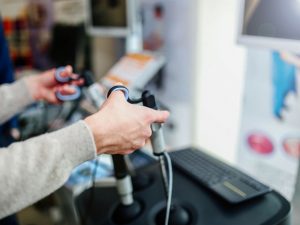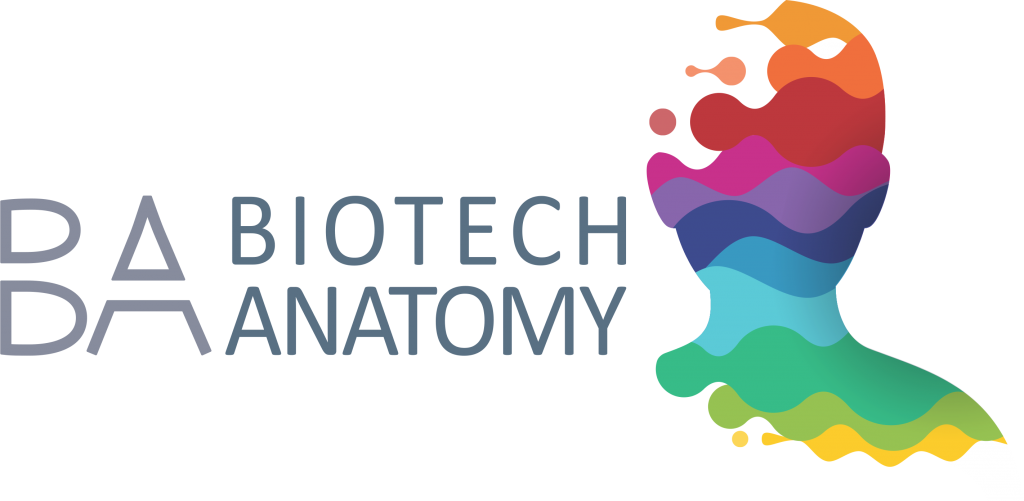Surgical Simulation Training
In the ever-evolving world of medical training, we’re constantly on the lookout for methods that enhance the skill set of future surgeons. Surgical simulation training has stepped into the spotlight as a promising tool, promising to revolutionize how surgical skills are taught and refined.
Our dive into the effectiveness of surgical simulation reveals a complex picture. While it’s clear that any form of training trumps no training, the debate on whether high-tech simulations outperform traditional methods is still very much alive. We’re here to dissect the data and explore the potential that lies within these virtual operating rooms.

The Importance of Surgical Simulation Training
Surgical simulation training has become a cornerstone of modern surgical education, paving the way for a new generation of skilled surgeons. In the past, the hands-on experience was limited to real-life operations under the watchful eyes of experienced surgeons. However, with the advent of facilities like Biotech Anatomy LTD, surgical simulation training has been elevated to a crucial juncture.
At Biotech Anatomy LTD labs, trainees have the invaluable opportunity to refine the skills without the pressure of actual surgery. These high-tech simulation environments offer several significant benefits:
- Risk-free Learning: Trainees can perform procedures as often as needed to master them with no risk to real patients.
- Realistic Scenarios: Simulations mimic real-life emergencies and anatomical variations, preparing residents for a wide array of surgical situations.
- Immediate Feedback: With advanced tracking of a trainee’s movements and decisions, immediate feedback is provided, which is key to effective learning.
Existing data underscores the effectiveness of such training programs. A survey encompassing residents from Switzerland, Germany, France, and Luxembourg revealed profound support for virtual reality training. Out of 596 residents surveyed, 100% recognized the importance of simulation training in the practical education.
Statistics from the Survey:
| Country | Respondents | Percentage Favoring Mandatory Training |
| Switzerland | 270 | 84% |
| France | 214 | 84% |
| Germany | 52 | 84% |
| Luxembourg | 21 | 84% |
| Total | 557 | 84% |
The residents surveyed advocated for an average of 42.51 hours of mandatory training annually. This acknowledgment of the value of simulated training reflects an industry-wide shift toward technological integration in surgical education. The trends in the US mirror this attitude, with 80% of orthopedic surgery program directors asserting the need for mandatory simulation training.
The benefits of working within Biotech Anatomy LTD labs extend beyond individual skill enhancement. They contribute to a broader movement prioritizing ethical practices and mitigating the economic strain on healthcare institutions. As traditional apprenticeship opportunities diminish, simulation training at specialized facilities like Biotech Anatomy LTD has emerged as an indispensable asset in the surgical community.
Types of Surgical Simulation Training
In the evolving landscape of medical education, surgical simulation training stands at the forefront, offering unparalleled opportunities for aspiring surgeons. At its core, this training encapsulates various types of simulators designed for skill enhancement and real-world application.
Low-Fidelity Models provide a basic level of training, allowing individuals to hone specific surgical skills or techniques. Although simplistic, these models serve as an effective starting point for novices, ingraining basic procedural concepts before advancing to more complex scenarios.
Transitioning to High-Fidelity Simulators, we witness a stark contrast. These sophisticated platforms mimic real-life conditions with impressive accuracy, offering a comprehensive educational experience. Surgeons can engage in full procedures, navigate anatomical complexities, and face dynamic challenges just as they would in an actual operating room.
Virtual Reality (VR) Simulators take surgical education a step further by immersing trainees in a fully interactive 3D world. Here, tactile feedback and visual immersion combine to create scenarios virtually indistinguishable from real operations. The potential for data analytics within these environments is immense, driving forward personalized learning and continuous improvement.
It’s essential to recognize that when we talk about Biotech Anatomy LTD and its contribution to surgical simulation training, we’re discussing an entity committed to the advancement of medical education. The cutting-edge labs are supplemented by anatomical models catering to various aspects of surgical training. By harnessing these resources, surgeons can practice and refine the skills, ensuring that they’re in a risk-free setting while still experiencing the pressure of life-like conditions.
Employing the labs at Biotech Anatomy LTD offers several benefits:
- State-of-the-Art Equipment: Access to some of the most advanced simulation technologies available today.
- Realistic Training Scenarios: Situations so authentic they closely replicate the experiences found in actual surgical procedures.
- Data-Driven Insights: The integration of analytics to monitor progress and identify areas for improvement.
By leveraging these tools, trainees are not only preparing themselves for the rigors of surgery but are also embracing a future where patient outcomes are enhanced through superior educational practices.
Benefits of Surgical Simulation Training
Surgical simulation training has reshaped the landscape of medical education, offering a plethora of advantages that enhance the training process. At the heart of this evolution is Biotech Anatomy LTD, whose labs have become synonymous with quality and innovation in surgical training. Our facilities provide trainees with a hands-on learning environment that mirrors real-life surgical challenges, ensuring that they are well-equipped to handle complex procedures.
Our labs boast a vast array of benefits that make them invaluable in the education of future surgeons:
- Realistic Scenarios: Equip with state-of-the-art technologies, our labs simulate real operating room conditions. This realism helps bridge the gap between clinical knowledge and practical skills.
- Progress Tracking: We integrate data-driven systems to monitor and assess the progress of each trainee. This personalized feedback allows for targeted improvement and skill refinement.
- Risk Reduction: Through repeated practice on high-fidelity simulators, trainees can become proficient without the ethical concerns or risks associated with practicing on real patients.
- Surgical Proficiency: Data from studies indicate that surgical simulation training is linked to improved performance, reduced surgery times, and lower error rates.
As we delve deeper into the specifics, it becomes clear that simulation training at Biotech Anatomy LTD is not just an additive to traditional medical schooling. It’s a transformative step in honing the fine motor skills and decision-making abilities that are crucial to surgery. Trainees engage with the real anatomic models, facilitating a gradual and thorough learning curve.
Each form of surgical simulation has shown merits in clinical trials, including VR simulators of laparoscopic surgery, which have led to improved surgical skills and shorter operative times. As we continue to optimize our training modalities, we remain committed to developing proficient, confident surgeons who are ready to excel in the operating room and contribute to enhanced patient outcomes.
Challenges of Surgical Simulation Training
While Biotech Anatomy LTD is proactive in addressing the complexities of surgical training, several, worldwide, inherent challenges still persist. Simulators providers must acknowledge these issues to enhance the quality further and efficacy of the future simulations.
First and foremost, the adaptation of surgical simulation training across various educational environments is uneven, often because of the lack of standardized guidelines. Trainees at different institutions may receive disparate levels of simulated experience which can affect the uniformity of surgical competence nationwide.
Another significant hurdle is the financial investment required to develop and maintain state-of-the-art facilities. High-fidelity simulators, which mimic real-life surgical scenarios most closely, can command a hefty price tag.
The recruitment and retention of expert faculty willing to dedicate time to surgical simulation training programs is another challenge. Trained professionals are often caught between the clinical duties and educational roles, making it difficult to secure a consistent presence in simulation labs.
To tackle these issues, we’ve looked at innovative solutions such as flexible scheduling and incentives for faculty who contribute to simulation training. Our priority is ensuring that all participants receive comprehensive training from dedicated, experienced professionals.
Surgical simulation requires a balance between hands-on practice and theoretical learning. Striking this balance is crucial to avoid over-dependence on simulated models, which might not represent every variable seen in live surgery. At Biotech Anatomy LTD, we emphasize a blended approach, combining simulations with real-world experiences to build a robust surgical skillset.
Finally, we must consider the views and preferences of the trainees themselves. Recent studies have advocated for more extensive inclusion of simulation training in residency programs to address limitations of the traditional apprenticeship model. Trainees are seeking an average of 42 hours per year of simulation training to be integrated into the curriculum.
By continuously evaluating and adapting our training methods, we can overcome these challenges, making surgical simulation training an increasingly valuable asset in modern surgical education.

Comparing Surgical Simulation Training with Traditional Methods
When we discuss surgical simulation training, it’s instrumental to compare it with traditional methods to grasp its full spectrum of benefits. Although both serve the imperative role of enhancing surgical skills, the route they take to achieve proficiency varies significantly.
With surgical simulation training, we’re observing a burgeoning field that offers refined practice scenarios without the ethical and practical implications of using real patients. This facet of medical training is pivotal, especially in its ability to provide repeated practice in a controlled environment.
A systematic review of 30 randomized controlled trials revealed that while computer simulation wasn’t proven superior to other forms of surgical training, it generally yielded better results than no training at all. This underscores the value of simulated training as part of a comprehensive educational framework.
In contrast, traditional methods like benchtop models, cadavers, and laparoscopic trainers have been the cornerstone of surgical education. The tangible nature gives trainees the tactile feedback necessary for developing fine motor skills essential in surgery. Despite the emergence of high-tech simulation, these time-tested techniques maintain the stance as effective tools. They’re not just proven methods but also more accessible to a wider range of medical institutions.
| Simulation Type | Outcomes Compared to No Training | Outcomes Compared to Standard Training |
| Computer Simulation | Generally better results | Not convincingly superior |
| Video Simulation | Inconsistent results | Insufficient data |
| Model Simulation | Possibly better | – |
| Cadaver Training | – | Possibly better than model training |
Moreover, advancements in computing are continually diminishing previous barriers to virtual reality simulations, such as signal processing delays. This evolution in tech is making surgical simulation more responsive and lifelike, offering an ever-closer approximation to real-life procedures.
In this technological age, Biotech Anatomy LTD is at the forefront, navigating the challenges of integrating surgical simulation, either for training or for developing medical robots, with traditional methodologies. By leveraging both forms of training, our goal is to ensure that surgeons are proficient, confident, and ready to meet the demands of the operating room. By combining these approaches—harnessing the strengths of each—surgeons can expect a more comprehensive education that better prepares them for the varied and unpredictable nature of real-world surgery.
Future Trends in Surgical Simulation Training
As pioneers in the field of surgical education, we’re witnessing a transformational shift in the realm of surgical simulation training. With data-driven metrics gaining prominence, there’s a push towards equipment that offers quantifiable outcomes. In time, traditional tools that can’t provide measurable results will likely be phased out.
Data-Driven Technology: We expect an increase in simulation technologies that not only assist in skill acquisition but also provide in-depth analytics. These insights can then be used to tailor training to individual needs and track progress over time. Biotech Anatomy LTD is at the helm of this movement, leveraging cutting-edge technology to enhance technical proficiency and decision-making abilities.
Simulation training is also evolving to cover more than just technical skills. There’s a growing recognition of the importance of nontechnical competencies, such as leadership and communication. These are essential for surgeons who aspire to take on more senior roles. Through simulation training, surgeons can practice various scenarios and procedures risk-free, strengthening the overall clinical experience.
Accessibility and Application: Furthermore, the technology we’re developing aims to make simulation training more user-friendly. This will encourage widespread adoption, ensuring that learning tools are not only accessible but also provide clear patient benefits. By the end of the training with Biotech Anatomy LTD, participants are not just adept at surgical techniques but also primed to lead and drive innovation in the respective organizations.
Refined Techniques and Better Outcomes: The trajectory we’re on points to a future where medical simulation technologies become, side by side with classical cadaver training, integral to surgical training. As new technologies evolve, they’re set to offer even more sophisticated and life-like experiences. The goal is to directly translate the skills learned in simulation labs to real-world scenarios, enhancing operative performance and patient outcomes.
As we continue to integrate these advancements, Biotech Anatomy LTD remains committed to preparing a new generation of surgeons. It’s a horizon brimming with possibilities, where simulation and physical training converge to improve surgical education and patient care.
Conclusion
We’re on the brink of a transformative era in surgical education. Embracing data-driven metrics and cutting-edge technology, we’re crafting simulation experiences that not only enhance technical prowess but also hone the essential nontechnical skills surgeons need. Our commitment is steadfast: to make simulation training more accessible and effective, ensuring the next wave of surgeons is well-equipped for the challenges ahead. Together with classical knowledge, best surgeons as teachers and companies like Biotech Anatomy LTD leading the charge, we’re confident that the future of surgical training will translate into superior care and outcomes for patients around the globe.


